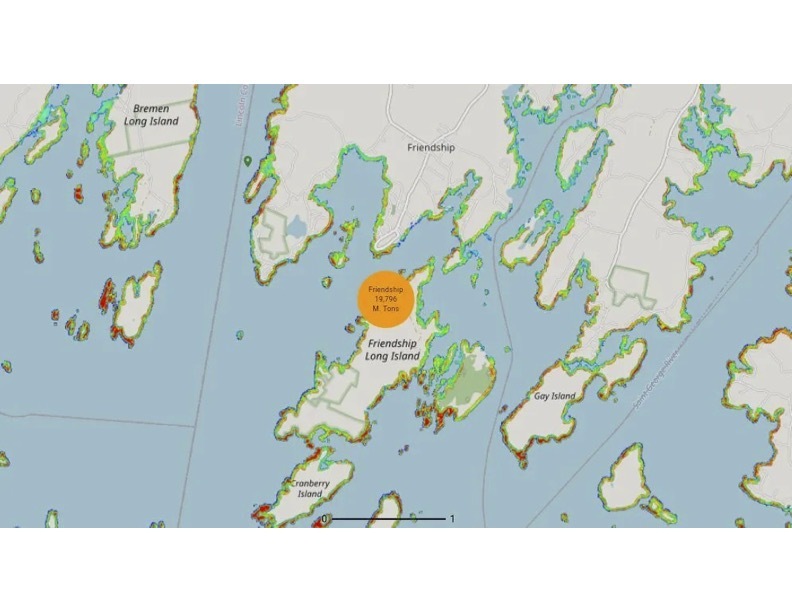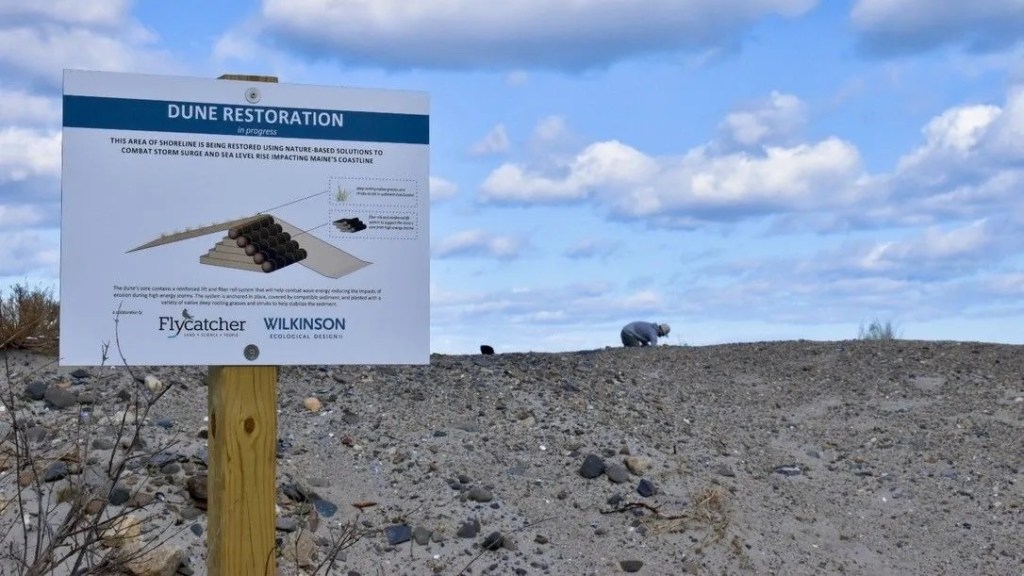
Amid the Trump administration’s cuts to federal climate change research, a New England remote sensing company has released a high-definition map of Maine’s coastline that its founder hopes will help local officials plan for climate resilience.
The online platform, from New Hampshire-based company Nearview, plots the best opportunities to fortify dunes and beaches along Maine’s 3,500-mile coastline to protect against sea-level rise. The map also marks where wild underwater forests lurk off the coast, which could inform seaweed harvesters and regulators.
The Coastal Ecosystem Map Application Platform, or CEMAP, was in the works for years before Nearview released it this August, said Stefan Claesson, Nearview’s founder and a specialist in geographic information systems.
Claesson hopes CEMAP will provide data that municipal officials, regulators, researchers and seaweed harvesters can use to manage Maine’s coastline and plan for climate change.
The first phases of CEMAP were funded by a grant from the National Oceanic and Atmospheric Administration. Many of Claesson’s remote sensing projects are supported by federal grants, and, while this project didn’t lose any funding, Claesson said his other projects have experienced sudden funding cuts.
“We’ve had a number of grant projects that we were part of that have been completely closed down,” Claesson said. “The funding level certainly isn’t where it used to be, but we’re happy to provide this data now. Maybe it’s timely.”
The platform has five different maps, and each plots a unique mosaic of data lines and points. One shows which stretches of Maine coast are best suited for dune stabilization or other climate resilience projects. Others detail the location and density of aquatic vegetation such as seaweed.
Each data point is the result of meticulous fieldwork and analysis. Claesson flew drones up and down the Maine coast, using multispectral cameras to peer beneath the water’s surface and capture images of aquatic vegetation.
Collaborators at the Maine Maritime Academy, Schoodic Institute, Bigelow Laboratory for Ocean Sciences, and the University of Vermont then helped estimate the mass of seaweed by taking field samples and analyzing satellite imagery, which Nearview plugged into a complex algorithm that plotted the size of the seaweed forests.
The platform can be used in two ways, Claesson said, by creating a “treasure map” of concentrated seaweed for the harvesting industry and estimating total vegetation biomass, which regulators could use to establish limits for a sustainable harvest.
Seaweed farmers also see potential applications of Nearview’s map, said Timothy Ehle, who runs an organic winged kelp farm with his cousin Isaac Lash in Friendship.
Establishing a productive farm depends on intricate environmental factors such as tidal flows and wind exposure. It also helps to have more general indicators such as whether wild seaweed is flourishing nearby, Ehle said.
“If it’s going to grow there wild, it’s definitely going to grow there cultured,” Ehle said.
For help with the coastal resilience map, Nearview turned to Jacob Aman, stewardship director at the Wells National Estuarine Research Reserve and a resilience planning expert.

Aman and the Wells Reserve were developing their own climate resilience map at the time and partnered with Nearview, combining Aman’s knowledge of sea-level rise and coastal habitat with Claesson’s detailed imagery.
The collaboration resulted in a map from each contributor identifying segments of Maine’s shoreline that could provide communities the most protection from storms fueled by climate change and sea-level rise.
The map from Wells Reserve, however, goes a step further to suit its intended audience of York and Cumberland counties. It maps the shoreline from South Berwick to Cape Elizabeth with variables that measure both how suitable a site along the coast is for restoration and how difficult it would be for a local government to execute such a project.
Projects could include nourishing a beach with more sand or stabilizing dunes with native plants, Aman said. His main objective for the map is to empower local leaders to decide for themselves.
For both Aman and Claesson, the next steps of their mapping projects involve getting them into the hands of potential users, whether local officials or seaweed businesses.
“Maps are powerful that way. They change people’s perspective,” Claesson said. “You get to see the coastal environment in a way that you haven’t seen before.”
This story was originally published by The Maine Monitor, a nonprofit and nonpartisan news organization. To get regular coverage from The Monitor, sign up for a free Monitor newsletter at themainemonitor.org/newsletters/.